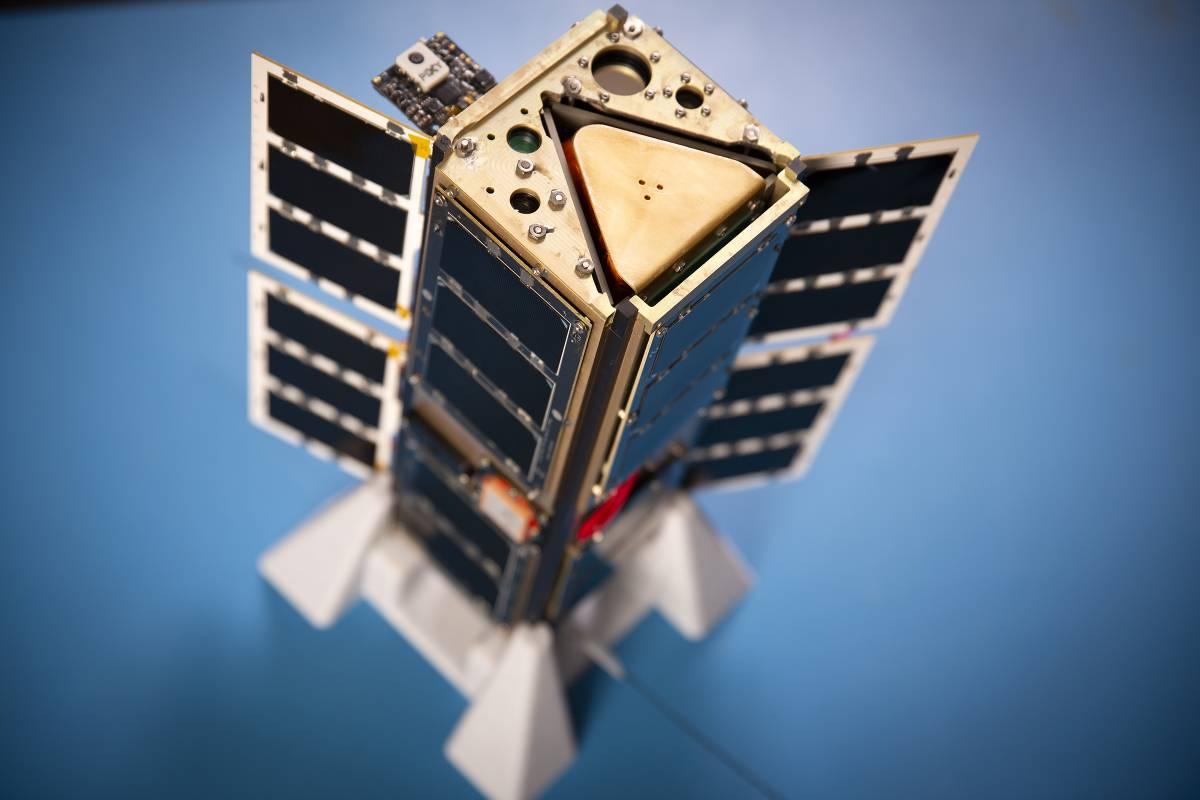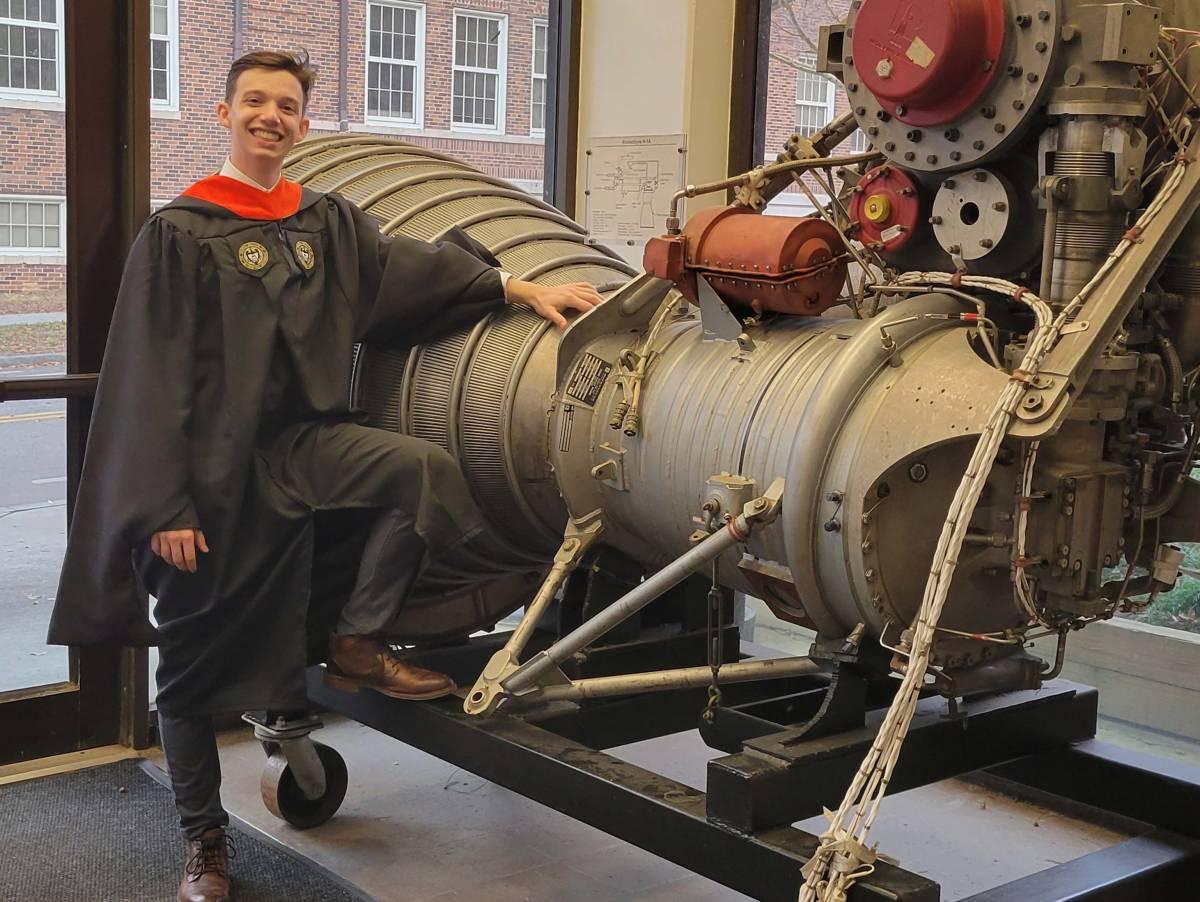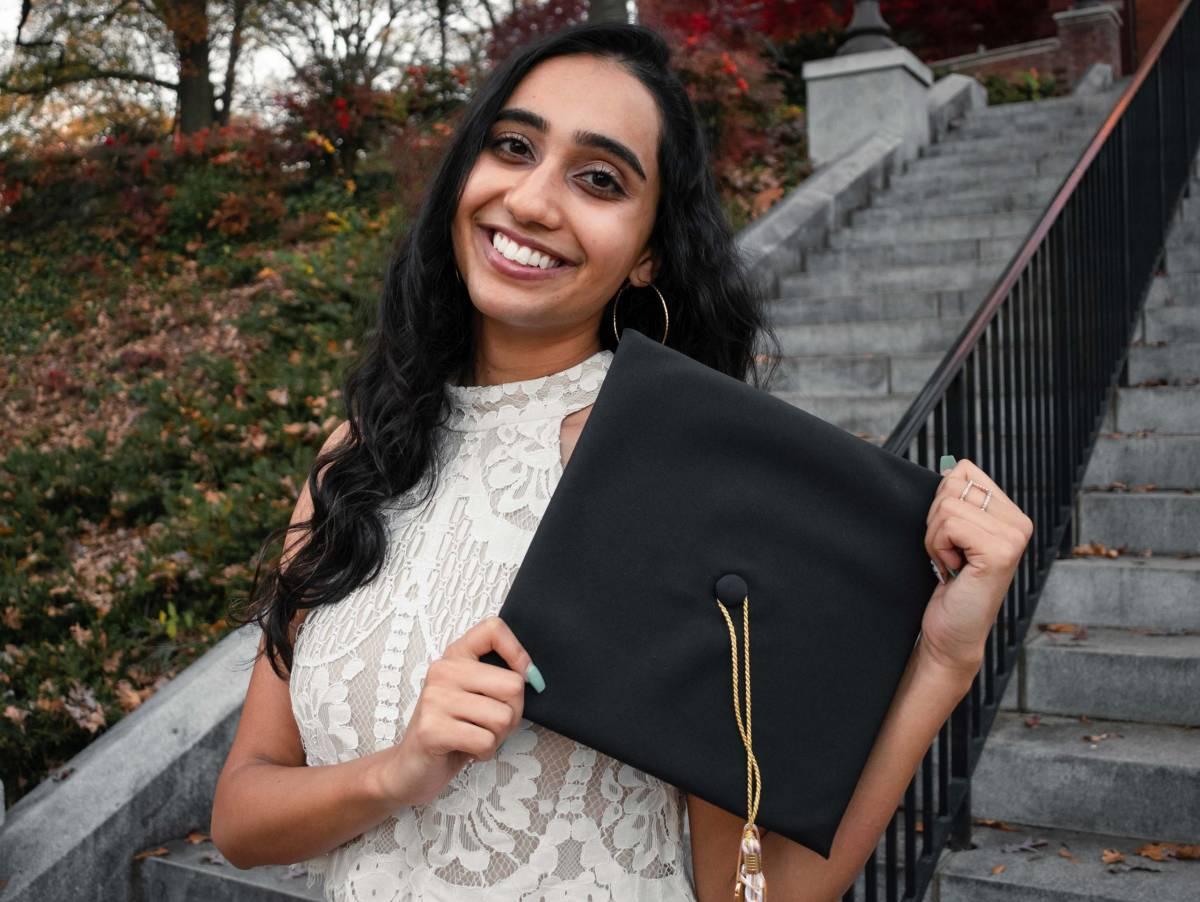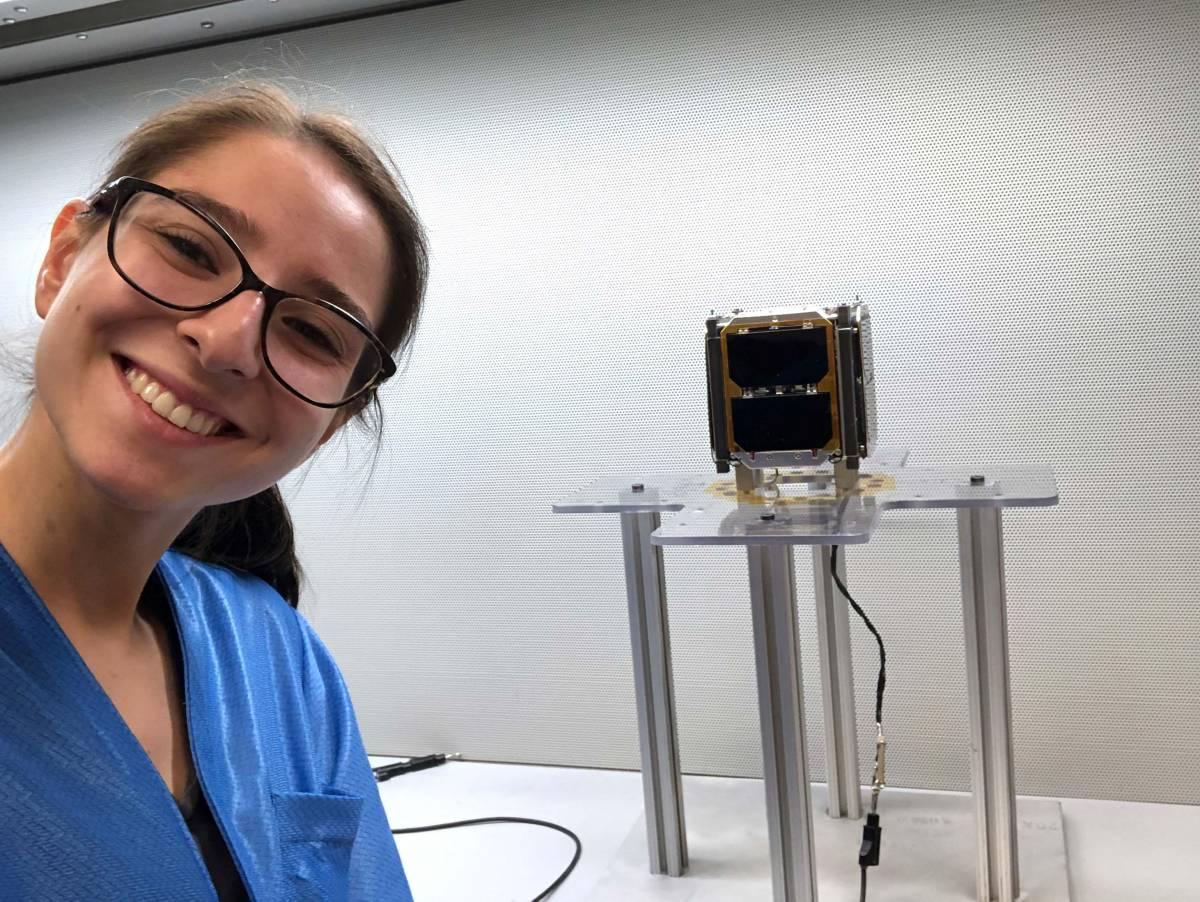Tuesday’s SpaceX launch adds another Georgia Tech milestone for new aerospace engineering graduates

Editor's Note: The two Georgia Tech CubeSats successfully reached orbit after launching on the morning of December 21.
Three days after receiving his master’s degree in aerospace engineering, Max Kolhof is headed to the coast of Florida to watch a culmination of his campus career. At 5:06 a.m. on Tuesday, Kolhof will look toward the heavens as a Space-X Dragon cargo rocket launches from Kennedy Space Center, carrying a spacecraft he helped build. The rocket will ferry two Georgia Tech satellites to the International Space Station (ISS), where they will eventually be deployed into low Earth orbit by astronauts.
Kolhof is among the hundred or so Georgia Tech students who have spent years designing, integrating, and testing the CubeSats, named GT-1 and TARGIT.
“It’s incredible to see the work of all of the students pay off,” said Kolhof, a GT-1 team member. “It’s a long and often rocky road to design, manufacture, and deliver a CubeSat – but it’s an incredible opportunity to supplement our education with real-life experience. Knowing that the hardware we assembled and tested with our own hands is going into orbit is an incredible thrill!”
GT-1 is a 1.4-kilogram CubeSat carrying an amateur radio payload featuring a digipeater and ROBOT system (AX.25 protocol at 437.175 MHz), which will allow HAM operators around the world to communicate with the spacecraft as it orbits.

GT-1’s primary function is to serve as an educational proof of concept and satellite bus demonstration, paving the way for three more CubeSats that will be created by Georgia Tech’s Space Systems Design Laboratory, which is led by Glenn Lightsey, a professor in the Daniel Guggenheim School of Aerospace Engineering (AE School).
Another member of the GT-1 team, Radina Yanakieva, graduated this past Saturday with her undergraduate aerospace engineering degree. She’s worked on the spacecraft for almost two years, most of it during the pandemic. Yanakieva will watch the launch via livestream and is hoping to set up a video chat with those in Florida to participate in the on-site excitement.
“I know GT-1 like the back of my hand. I worked on it every day for one school year,” said Yanakieva, who has accepted a position as an avionics systems engineer at SpaceX. “This isn’t the first mission I’ve worked on that has gone to space, but it is the first where I’ve had such an integral role. To think that it’ll be hundreds of kilometers above the ground on Tuesday is insane.”
The other Georgia Tech spacecraft headed to space this week is TARGIT, a compact laser altimetry system capable of delivering accurate topographic data (down to the centimeter) from as far away as 10 kilometers. Once TARGIT is deployed by the ISS crew, the CubeSat will release a small inflatable on a tether and create a 3D image of the target using a miniaturized LiDAR imaging camera.

Eventually, the tether will be cut and the satellite will use its precise pointing and tracking capabilities to continue capturing images of the inflated target as it drifts away. This final phase is intended to represent a flyby scenario in a traditional space mission, where the topography of a comet, asteroid, or specific surface location is the desired target.
More than a hundred students, under the guidance of AE School Professor Brian Gunter, have worked on TARGIT for nearly five years. Saumya Sharma graduated on Saturday. Tuesday will be extra emotional for her. During her SpaceX internship, she worked on the late load procedure for crew and cargo Dragon-2, which allows NASA and Nanoracks to install powered cargo lockers that hold CubeSats like TARGIT 24 hours prior to launch.
“I remember being a timid freshman joining the TARGIT research project, and now I owe this project providing me the courage to pursue internships at top aerospace companies such as SpaceX and Blue Origin,” said Sharma. “It feels like a very fitting culmination to my undergraduate experience to see this satellite fly on a launch vehicle system that I contributed to. I feel truly humbled to have had these opportunities and extremely grateful that my professors, mentors, friends, and parents are cheering me on through the finish line.”
Sharma will watch from a Cape Canaveral beach with others on the TARGIT team, then grab her board for a celebratory surf as the sun rises.
Each of the new alumni says Tuesday’s excitement is mixed with a bit of sadness, as they leave behind campus and their aerospace colleagues. But they’re quick to mention that the missions were instrumental in their success at Georgia Tech, preparing them for what lies ahead in their professional careers.
“At times this project definitely challenged my technical wits, but I learned so many different skills through this project from project management to programming,” said Sharma. “Seeing the collective hard work of over a hundred students just shows me the beauty of doing the impossible in engineering. It honestly just feels like pure joy.”
“The AE School’s master’s curriculum is exceptional and provides the opportunities for deep dives into the topics that define our industry,” said Kolhof. “But above all, the research opportunities are what set Georgia Tech apart, and I feel ready and eager for what comes next. I’m proud to be a Ramblin’ Wreck from Georgia Tech!”



